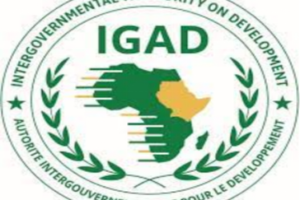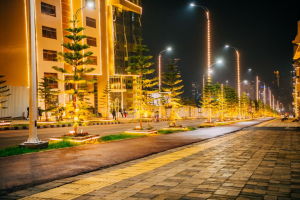
BY SOLOMON DIBABA
The Almighty God was not only the creator of heaven and earth but also the originator and inventor of the Garden of Eden which some theologians suggest is found in Ethiopia in connection with one of the rivers that flow in the garden, the Ghion River which is most likely our modern Blue Nile. (Please refer to New KJV, Genesis Chapter 2 verse 8-15 in the Bible). So then, God can be considered as the first initiator of an idea to keep the planet green through planting trees.
The special emphasis could be on food security and protection and management of the environment. He later put man in the Garden so that he can manage it. The faithful in Ethiopia therefore plant trees not only for their own use but also for the glorification of their creator.
It is therefore worth noting that planting and managing trees is one of the various activities of the Ethiopian society whose significance can go beyond an earthly one and can be considered along those that are heavenly order and human obligation. Some of our social media quack politicians with their alligators tears lament that it is not the duty of the government to plant trees and establish parks exhibiting their lack of knowledge about the link between the natural and practical linkage of planting trees with food security, public and individual health, economy and management of the ecosystem with full participation of all Ethiopians.
Ethiopia was previously and even now entangled with a permanent contradiction between humans and nature. The National Green Legacy Initiative is a national blueprint to resolve this critical contradiction in Ethiopia.
The National Green Legacy Initiative is a major national project that can effectively resolve the alienation between human beings and Mother Nature by restoring the dialectical relation between humans and their environment.
The Initiative is national, regional and local in its application but is also a project that should be replicated at house hold level in the form of backyard multi-tier gardening. What does this actually mean? When we plant fruit trees at our backyard we can also plant legumes, root crops and vegetables under the trees both for household consumption and for income generation at the local market. In semi-arid ecologies, water harvesting could boost a year around availability of food at the family level.
Ethiopia is expending about 20USD for each tree to be planted and is doing so primarily depending on the country’s available resources with limited support from partners. The danger of attempting to politicize on the issue of climate change mitigation undermines the fact that climate change has no boundaries or national borders and that the cumulative effect is already felt worldwide.
It is repeatedly narrated that the less developed countries contribution to global warming and carbon emissions is negligible but they are the ones who are suffering from the effects of climate change for which the most industrialized countries are responsible. If the world is to escape from the impending catastrophe, climate justice must prevail not later but now.
We are now heading towards COP 28 with no meaningful and tangible results on climate change mitigation.
The author of this article proposes the inclusion of planting medicinal herbs and plants along with the trees as a means of promoting herbal medicine both for research purpose and for their medical values in treating some diseases common in Ethiopia.
It is also equally important to strengthen community and institutional ownership of the trees to ensure better survival rate. It is not only about owning the planted trees but using the trees planted for income generation for unemployed youth is very important. This implies that tree planting is useful for reducing unemployment particularly in the rural areas of Ethiopia in which the youth can plant trees in groups in the rugged hill sides with multiple purposes.
Community active and conscious participation in the entire cycle of the project is undoubtedly important and necessary.
National Green Legacy Initiative establishes the internal link between various sectors of the national economy of the country and therefore should not be perceived as a standalone project that is restricted only to a response on climate change.
Documenting the entire process of the timeline in the green legacy initiative is as important as the project itself for several reasons. First, it is part of the ecological history of this country; second, it is a learning process that needs to be transferred both to the current and coming generations.
Finally the practical experience and the results so far gained need to be shared with the rest of the world particularly with African countries whose vulnerability to climate change is very high.
There is also a need to establish a permanent data center that will store all the necessary information pertaining to the National Green Legacy Initiative. This will create an opportunity for conducting integrated research on mitigating climate change disasters in the country.
Linking the Initiative with eco-tourism projects across the country and the national program on catchment management on the watersheds of the main river basins in the country must be carefully studied and implemented to avoid any level of mismatch between renewable hydropower electric production and environmental protection.
Hence the author argues that the National Green Legacy Initiative is a tool and national brand for Ethiopia’s climate resilient green economy regime.
The Ethiopian Herald June 29/2023





